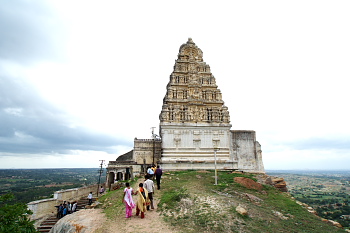Tourist Places Information - Chikmagalur Karnataka
Chikkamagaluru district was called Kadur district until 1947. Chikkamagaluru takes its name from the word "Chikkamagala Uru" which translates to "younger daughter's town" in Kannada language. It is said to have been given as a dowry to the youngest daughter of Rukmangada, the legendary chief of Sakrepatna (now in Kadur taluk of Chikkamagaluru District). Another part of the town bestowed on the elder daughter is known as Hiremagalur, which is now a locality in Chikmagalur. Some old inscriptions reveal that these two places were known as Kiriya-muguli and Piriya-muguli(Muguli in Nadugannada translates to "flower"). In a fertile valley south of the Baba–Budan hill range is the headquarters town of the district..
Although the town of Chikmagalur is a very quaint one, that can be best described as an abode for relaxation, the surrounding region has a varied landscape - from the low flatlands to the hilly regions of Malnad. The district has a huge number of coffee estates, and is rightly considered to be the coffee capital of Karnataka.
The town houses the famous Mahatma Gandhi Park, which is a prime tourist destination. Tourists mainly flock to the town during the time of Dussehra (following Navratri), as the folk performances and the cultural scenes can render travellers breathless.
Shopaholics can take a walk down to MG Road for a good time, and the adventurous can explore the surrounding destinations.
Weather: 22°C, Wind NE at 13 km/h, 78% Humidity
Vehicle registration: Karnataka
Population: 101,251 (2001) UNdata
Colleges and Universities: Adichunchanagiri Institute of Technology, Mountain View High School
Mullayanagiri
Mullayanagiri, located at a distance of 16 Km from Chikmagalur is a part of the Baba Budan Giri Hill ranges. Mullayanagiri stands 1930 meters tall rewarded as the tallest peak in Karnataka state. Enroute, you can see Sitalayanagiri where the water inside the Shiva temple neither raises nor decreases. The way to Mullayanagiri is very narrow that has a views from steep cliffs. Driving towards the peak is not possible and you will have to trek up the hill from the mid way point. There's a small temple located on top of the hill. From the highest point of the hill, you can view Arabian Sea on clear days. The small hillock in the temple compound is the highest point in Karnataka. The narrow road to the temple makes two way traffic impossible. It is a great trekking spot in Karnataka.?
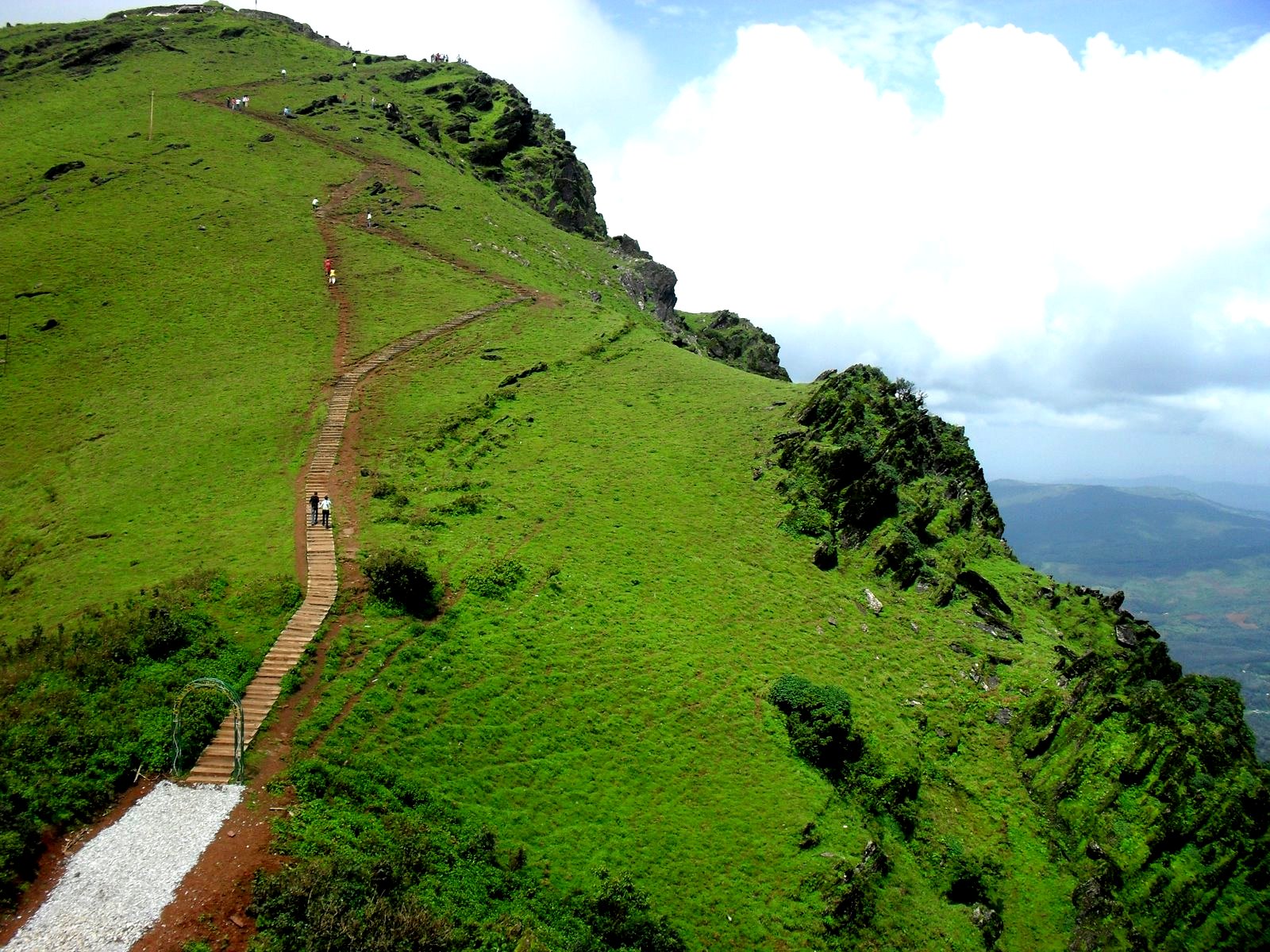

Baba Budangiri
Baba Budangiri is a mountain in the Baba Budan range of the Western Ghats of India. Located in the Chikkamagaluru District of Karnataka, Baba Budangiri is known for its shrine to the Sufi saint Baba Budan, a pilgrimage site for both Hindus and Muslims.
The main peaks in this range are the Mullayanagiri and Baba Budangiri (height 1895 m). Collectively, these peaks are known as Chandradrona Parvatha Shreni (Chandradrona Mountain Range)[1] as they naturally form the shape of a crescent moon.
Mullayanagiri (also spelt Mullayangiri or Mullainagiri) is the highest peak in the Baba Budangiri range. With a height of 1930 m (6317 ft), it is the highest peak between the Himalayas and the Nilgiris. There is a famous trekking trail between Mullayanagiri and Baba Budangiri.



Bhadra Wildlife Sanctuary
Bhadra Wildlife Sanctuary is 38 km north-west of Chikmagalur town. The sanctuary is surrounded by Mullayanagiri, Hebbe Giri, Gange Giri and Baba Budan Giri hills and has the tributaries of the Bhadra river flowing through it. The various wildlife can be found in this sanctuary like Gaur, Elephants, Tiger, Leopard, Sambar, Chital spotted deer, Boar, Porcupine, Muntjac, birds like the Peacock, Parrot, Partridge, Pigeon, Munia and Bee eaters, and reptiles such as King Cobras and Indian Rock Pythons.
800X600_original_watermark.jpg)


Hebbe Waterfalls
A downhill trek of about 8 km from Raj Bhavan takes one to Hebbe Falls where water streams down from a height of 168 meters in two stages to form Dodda Hebbe (Big Falls) and Chikka Hebbe (Small Falls). Located inside a coffee estate the view is mesmerizing and a must see when in the area! If you do not wish to walk you could even reach by car.

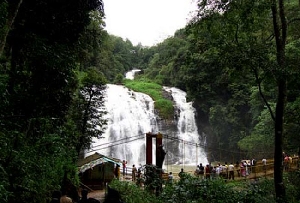
Kallathigiri Falls
Kalhatti Falls or Kalahasti Falls is located at Kallattipura (kallathigiri) in Chikmagalur district of Karnataka, India. The waterfall is 10 kilometers (6.2 mi) away from Kemmangundi hill station. It offers an excellent view of the cascading water from the Chandra Drona Hill from 122 meters (400 ft) above in front of the Veerabhadreshwara Temple dedicated to Lord Shiva.
Legends say that sage Agastya had prayed for a long time in this place.The Veerabhadra temple is supposed to be built in the Vijayanagar times. The temple is with three stone carvings of three elephants at the entrance. Water cascade water over these elephants and devotees believes that these waters have the power to cure diseases.
An annual fair of Lord Veerabhadra is held here for three day during March/April which attracts pilgrims from many parts of the state.
It is also a hot spot among the trekkers who carry out their trekking exercises on the adjoining hills and mountains. Trekkers climbing along the mountainous terrains enjoy the picturesque view. With base in Tarikere which is 35 km from Kemmangundi, trekkers climb the hill slopes to enjoy the panoramic view of the verdant valleys below.
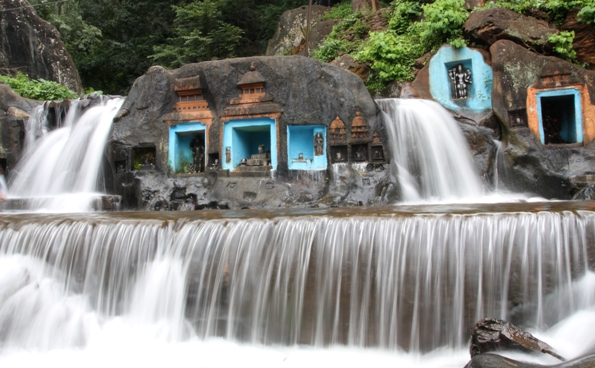


Halebidu Hoysaleswara Temple
Hoysaleswara Temple is one amongst the largest shrines that are dedicated to Lord Shiva in South India. In the 12th century, the temple was built during the rule of King Vishnuvardhana of Hoysala Empire. The construction of this marvelous shrine got completed in 1121 CE. Located at Halebid, Hoysaleshwara Temple can be easily reached from Belur (16 kms), Hassan (31 kms) and Mysore (149 kms) in Karnataka. Apart from these cities, Halebid is accessible from almost every city and town of Karnataka by regular buses and hired taxis.
It is believed that the temple derived its name from Vishnuvardhana Hoysaleswara, the presiding ruler in those times. However, the erection of the temple was started and sponsored by the affluent Shaiva citizens (mainly Ketamalla and Kesarasetti) of Halebid. At the time of construction, a tough competition held between Hoysaleswara Temple and Chennakesava Temple at Belur. Hoysaleswara Temple witnessed ransack of loot and raid by the Muslim invaders in the early 14th century. After the horrifying incident, the temple was reduced to rubble and fell into the state of sheer neglect.
Hoysaleswara Temple has two shrines, one dedicated to Hoysaleswara and another for Shantaleswara (named after Shantala Devi, queen of King Vishnuvardhana). Standing on a raised platform, the temple is made out of Chloritic Schist (Soapstone, also known as potstone). Both of the shrines are located next to each other, facing the east direction. The shrine comprises the Shiva lingam (phallic form of Lord Shiva), the universal symbol of Lord Shiva.
Besides the other shrines, there is one shrine that is dedicated to Lord Surya. Here, Sun God is depicted in the 7 ft tall image. The halls comprise huge images of Nandi, the attendant of Lord Shiva. Hoysaleswara Temple stands as a testimonial of the bygone era. The outstanding structure of the temple has been accredited for being the epitome of Hindu architecture.



Belur Chennakeshava Temple
The large temple in Belur is one of the most remarkablebelurad.jpg (31973 bytes) monuments from Hoysala times and region. It was commissioned by the Hoysala king himself to celebrate an important military victory in 1117 AD. This is exceptional, since nearly all other Hoysala temples were commissioned by rich officials or rich civilians. The king obviously wanted an extraordinary temple because it has been built in an architectural style foreign to the region. Moreover the monument is exceptionally large and its decoration very lavish. Many of the decorations were added later in the 12th century by the grandson and successor of the founder.
The Cennakesava-temple stands in a compound with several smaller temples and a pond.
The monument consists of a shrine, an open hall and a platform. The shrineBelur3.jpg (59877 bytes) (vimana, mulaprasada) is larger than usual, its pedestal measures about 10 by 10 meters while a more usual size is 5 by 5 meters. Its architectural style is Nãgara (North Indian) but this is rather difficult to see because its tower is lost. The hall (mandapa) is of the open type, originally it only had a parapet. Later on the space between parapet and roof has been closed-off with magnificent screens, together with the further embellishment of the temple. The platform (jagati) is an essential part of the over-all design of the monument. It forms a unity with the rest of the elevation because it carefully follows the outlines of the shrine and the hall. Its three flights of steps add dignity to the entrances of the hall and it provides a walkway around the shrine (pradakshinapatha). Circumambulation of the shrine is an important form of worship.


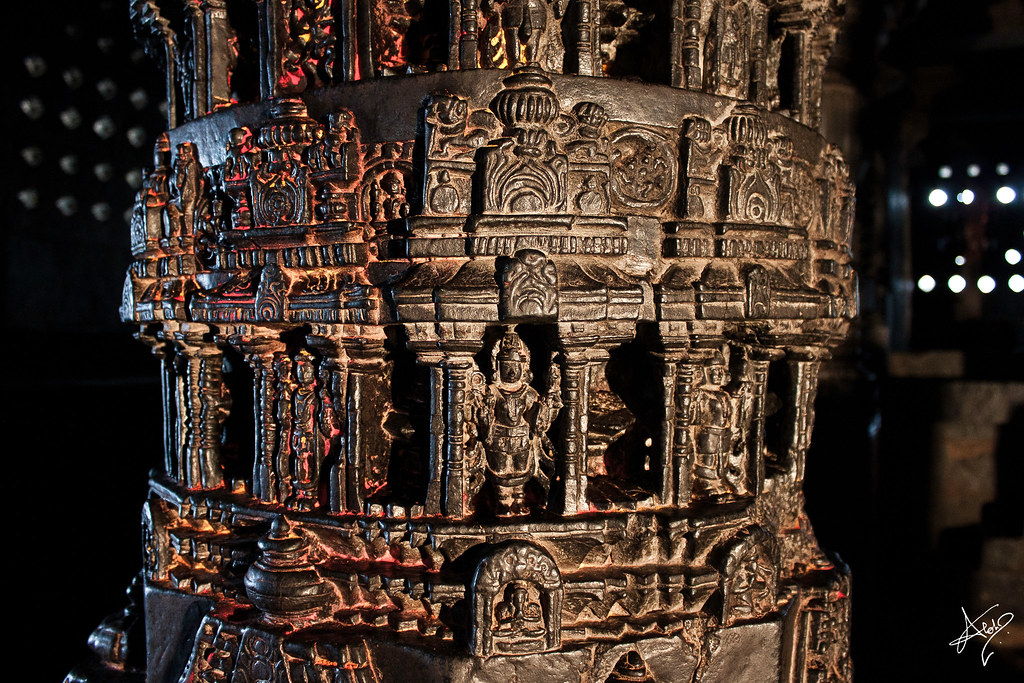
Shravanabelagola Bahubali Temple
Bahubali was the son of Rishabha (first tirthankara and founder of Jainism). Bahubali is a much revered figure among Jains. After the nonviolent duel with Bharata, his elder brother, Bahubali abandoned his kingdom and clothes to became a Jain monk.Bahubali meditated motionless for a whole year in kayotsarga posture because of which climbers grew around his legs. After one year of meditation, Bahubali attained omniscience (kevala jnana). According to Jain texts, Bahubali attained moksha (liberation from the cycle of births and deaths) at mount Kailasa and became a Siddha (liberated soul).
Bahubali is also called Gommatesh because of the statue dedicated to him. "Gommateshwara" statue, built by the Ganga dynasty minister and commander Chamundaraya, is a 57-foot (17 m) monolith (statue carved from a single piece of rock) and is situated above a hill in Shravanabelagola, in the Hassan district of Karnataka state, India. It was built in around 983 A.D. and is one of the largest free standing statues in the world. On August 5, 2007, the statue was voted by Indians as the first of Seven Wonders of India; 49% of the total votes went in favor of it.
According to Jain texts, when Rishabhdeva decided to become a monk he distributed his kingdom into his 100 sons, of whom Bharata got the city of Vinita (Ayodhya) and Bahubali got the city of Podanapur (Taxila). After returning from the world conquest, Bharata demanded submission from his own brothers. Bahubali defied Bharata and challenged him for a fight.



Melkote Cheluvanarayana Swamy Temple
Cheluvanarayana-swamy-temple-melkoteThe Cheluvanarayana Swamy temple is a famous temple that has more religious than architectural significance. Also known as Thirunarayanapura, it is located on top of the rocky Yadugiri hills. This shrine is very ancient, though the temple complex is just around 1000 years old. This temple is a Vaishnava shrine, dedicated to Lord Vishnu. This is an important pilgrimage site, especially for those belonging to the Sri Vaishnava community.
Cheluvanarayana Swamy Temple – History and Mythology
This temple is very ancient. According to tradition, Lord Rama himself came here with his son Kusha and worshiped Lord Narayana here. For this reason, the processional idol, Sampath Kumara, is also known as Ramapriya. The main deity of the Shrine is Thirunarayana or Cheluvanarayana Swamy. The Devi in this temple is known as Yadugiri Nachiyar.
Sri Ramanuja, the great Vaishnava Acharya, stayed in Melkote for 12 years, and gained many followers, including the Hoysala King, Vishnuvardhana. During this time, the processional idol of this temple had been lost for some time. Realizing that the idol was in the possession of the Muslim emperor in Delhi, Muhammed Shah, Sri Ramanuja decided to go there and get it back.
Muhammed Shah was greatly impressed by the saint and granted him permission to take it back. So, the idol came back to Melkote. This temple has been revered and worshipped by several succeeding dynasties, the Hoysalas, the Vijayanagara kings and the Mysore Maharaja. They have all made contributions to the temple in terms of grants, jewels, funds for temple maintenance etc.

